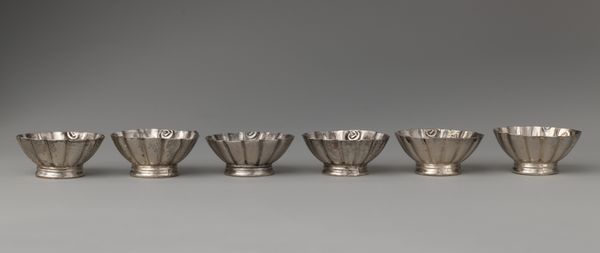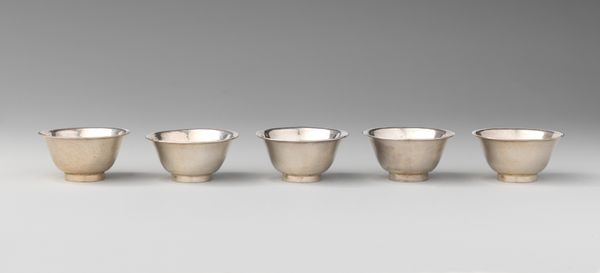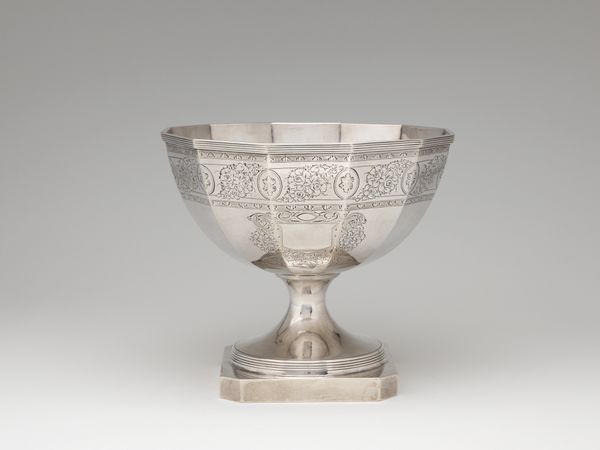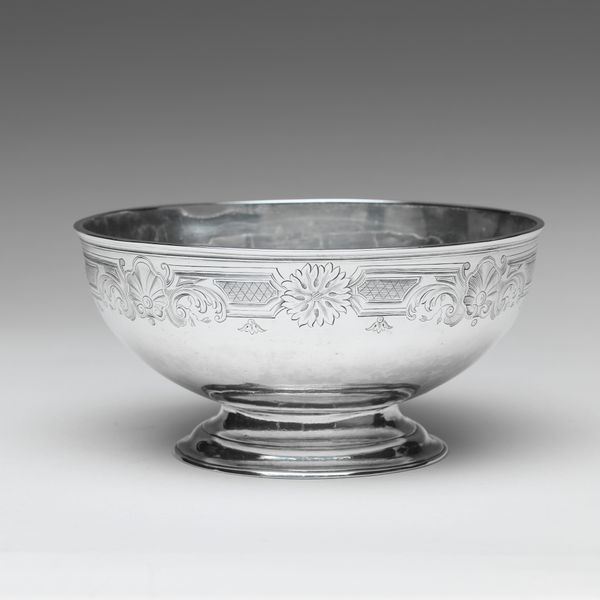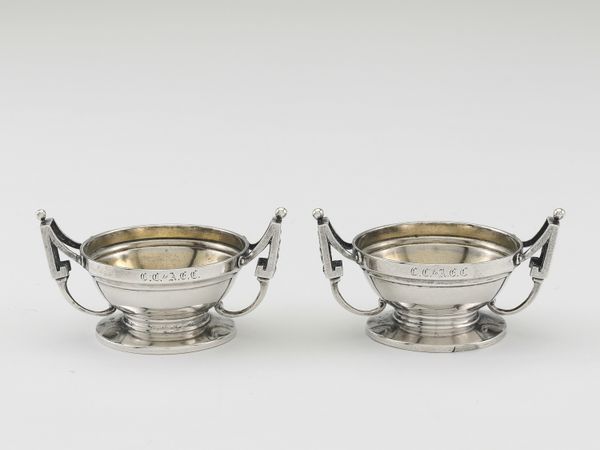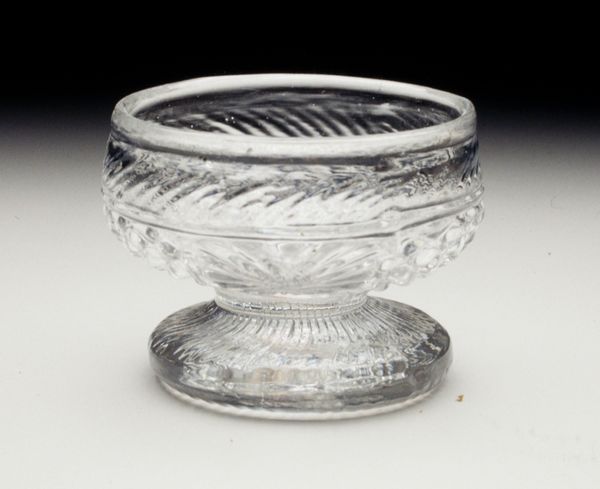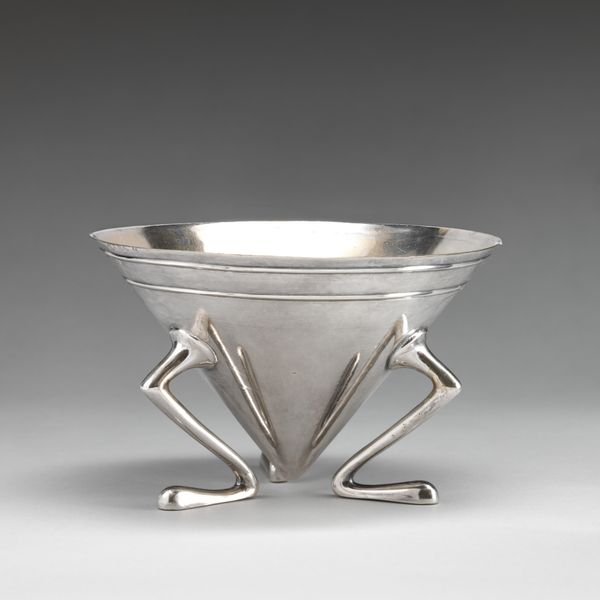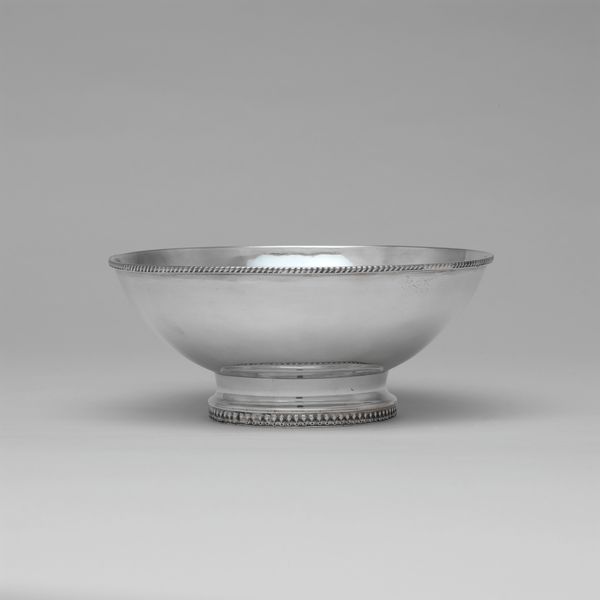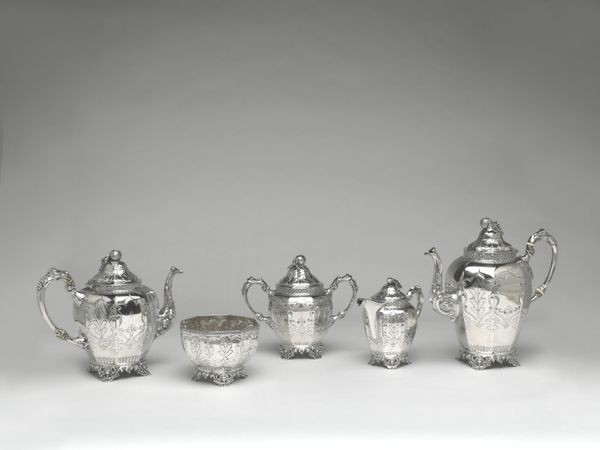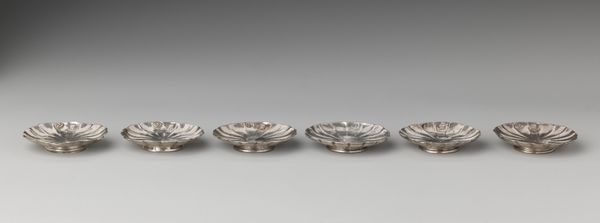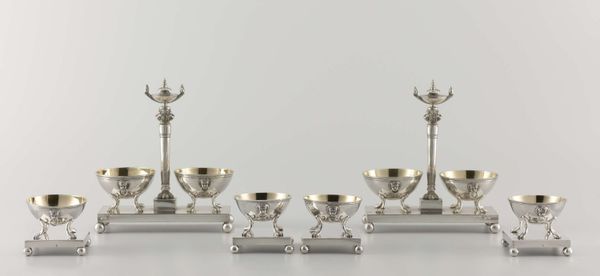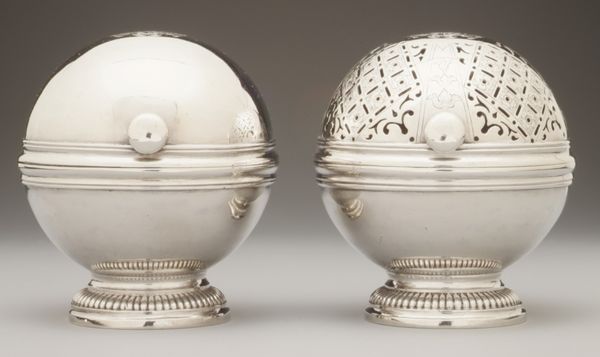
photography, glass
#
photography
#
glass
#
modernism
#
realism
Dimensions: 5 1/4 x 2 1/2 x 2 1/2 in. (13.34 x 6.35 x 6.35 cm)
Copyright: Public Domain
Curator: Standing before us is an arrangement of five glass vessels, believed to be wine glasses, dating back to around 1830. They are currently held in the collection of the Minneapolis Institute of Art. Editor: They give an almost clinical, detached air with that stark white background and the clear glass. Precise but somehow cold. Curator: Well, look closer at their shapes. Notice how each differs in its dimensions, the height of the stem, the width of the bowl. It's a study in subtle variation using the common language of crystal glass design, a dialect specific to, I suppose, its intended utility. Each piece embodies structural variation on the singular aesthetic motif: the diamond cut. Editor: These glasses whisper stories of a bygone era. One can imagine lavish tables, flickering candlelight... but how did such delicate items survive through the ages to end up displayed here? What hands did these glasses grace, and at what momentous occasions were they raised? It really makes me ponder about this idea of 'preciousness,' because I think it must have acquired an entirely new layer of meaning from simply surviving until our modern era, regardless of how pretty their decoration is. Curator: An intriguing point. One might argue that their material integrity echoes their function – the containment of ephemeral liquid; that such crystalline forms offer visual embodiment to their cultural usage and socioeconomic utility for people to display status. The transparency of the glass makes manifest its inherent quality – or the transparency and emptiness within. It shows the space that needs to be filled. Editor: I hadn't considered the socio-economic aspects but their very fragility highlights their existence as objects of wealth and refinement in the early 19th century. The presence of them now gives the piece an evocative quality. Curator: Indeed. And examining them through the lens of their compositional integrity reveals that their placement as a set enhances their artistic, functional statement—that a series implies continuity. It enhances their aesthetic force significantly. Editor: Looking at them arranged like this has shifted my initial perspective. These aren't just remnants of history frozen in time. They’re dynamic participants in a conversation between the past, present, and ourselves.
Comments
No comments
Be the first to comment and join the conversation on the ultimate creative platform.
